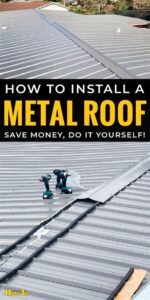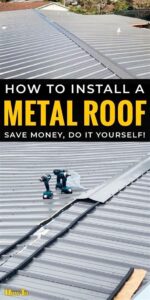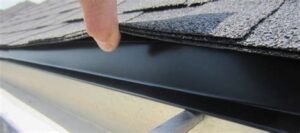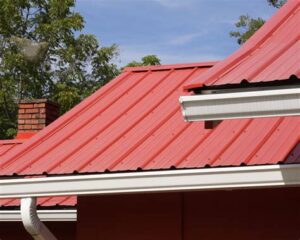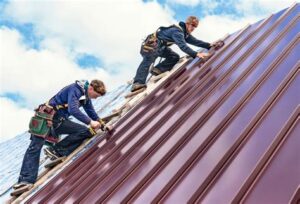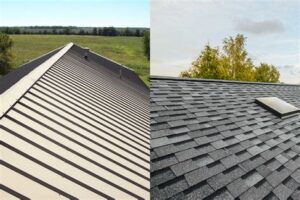Metal roofing has rapidly gained popularity among homeowners and builders alike, and for good reason. Among the various options available, 29 gauge metal roofing stands out for its combination of durability, cost-effectiveness, and aesthetic appeal. In this article, we’ll explore ten surprising facts that highlight the unique benefits and features of 29 gauge metal roofing. Whether you’re considering a new roofing solution or looking to upgrade your existing structure, understanding these key aspects can help you make an informed decision. From its impressive longevity to installation tips that ensure a successful project, we’ll cover everything you need to know about this remarkable roofing choice. Get ready to discover why 29 gauge metal roofing may be the perfect fit for your home!
Introduction To 29 Gauge Metal Roofing Benefits
When considering roofing options, 10 things come to mind that highlight the advantages of 29 gauge metal roofing. This type of roofing material offers numerous benefits that can enhance the longevity, aesthetics, and functionality of any structure. Below are some key benefits that make 29 gauge metal roofing a wise investment:
| Benefit | Description |
|---|---|
| Lightweight | 29 gauge metal roofing is significantly lighter than traditional roofing materials, which reduces stress on the building’s structure. |
| Energy Efficiency | With reflective properties, this metal roofing can help maintain a cooler indoor environment, leading to reduced energy costs. |
| Low Maintenance | The durable surface of 29 gauge metal roofing requires minimal upkeep, saving both time and money in the long term. |
| Resistant to Elements | This roofing material is highly resistant to weather-related issues, such as wind, rain, and snow, which enhances its lifespan. |
| Eco-friendly | 29 gauge metal roofing is often made from recycled materials and is recyclable at the end of its life cycle. |
Understanding these benefits allows homeowners and builders to make informed decisions while selecting roofing materials. With the long-term advantages and sustainability of 29 gauge metal roofing, it’s clear why it stands out among other options.
10 Things That Set 29 Gauge Metal Roofing Apart
When it comes to roofing materials, 29 gauge metal roofing has some unique attributes that distinguish it from other options on the market. Here are 10 things that set 29 gauge metal roofing apart:
| Feature | Description |
|---|---|
| Weight | 29 gauge metal roofing is lighter than thicker gauge options, making it easier to handle and requiring less structural support. |
| Cost-Effectiveness | With its balance of durability and affordability, 29 gauge metal roofing provides a cost-effective solution for various building types. |
| Energy Efficiency | These roofs often come with reflective coatings that help reduce heat absorption, contributing to lower energy bills. |
| Variety of Styles | Available in various colors and finishes, 29 gauge metal roofing can complement different architectural styles effectively. |
| Weather Resistance | This gauge has enhanced resistance to hail, wind, and other severe weather elements, ensuring long-lasting performance. |
| Low Maintenance | 29 gauge metal roofs require minimal upkeep, often only needing occasional cleaning to maintain their appearance. |
| Recyclability | Made from recyclable materials, these roofs offer an environmentally friendly roofing option. |
| Fire Resistance | Metal roofs are non-combustible, providing enhanced safety against fire hazards. |
| Noise Reduction | Properly installed underlayment can significantly dampen sound, making 29 gauge metal roofs quieter than expected. |
| Longevity | With a lifespan of 40 years or more, 29 gauge metal roofing stands out for its durability over time. |
These attributes make 29 gauge metal roofing an increasingly popular choice for homeowners and builders alike. Understanding these 10 things can lead to more informed decisions when considering roofing options.
Durability Of 29 Gauge Metal Roofing Explained
When considering roofing options, durability is a crucial factor, especially for materials exposed to harsh weather conditions. 29 gauge metal roofing distinguishes itself with exceptional resistance and longevity. Here are some key points that highlight its durability:
- Thickness and Strength: The 29-gauge thickness offers a perfect balance between weight and strength, making it resilient against various impacts.
- Corrosion Resistance: Most 29 gauge metal roofing systems are coated with protective layers that guard against rust and corrosion, ensuring they withstand the test of time.
- Wind Resistance: This type of roofing is engineered to endure high winds, making it suitable for areas prone to severe weather conditions, including hurricanes and heavy storms.
- Fire Resistance: Metal roofs, including those made of 29 gauge materials, provide excellent fire resistance, contributing to the overall safety of the structure.
- Decay and Pest Resistance: Unlike wood or other organic materials, metal roofing is not susceptible to termites, mold, or decay, which enhances its lifespan.
In essence, the 10 things that set 29 gauge metal roofing apart are its robust construction and inherent resistance to various environmental challenges. With proper installation and maintenance, homeowners can expect this roofing to last for decades, providing peace of mind and stability.
Cost Considerations For 29 Gauge Metal Roofing
When evaluating your options for roofing, understanding the cost considerations associated with 10 Things related to 29-gauge metal roofing is essential. Here are some key factors to keep in mind:
- Material Costs: The price of 29-gauge metal panels can vary based on the manufacturer and the type of metal used (steel, aluminum, etc.). Generally, steel panels tend to be more affordable than aluminum.
- Installation Expenses: Hiring professional roofers may incur additional costs. Although installation fees can vary greatly, it’s vital to factor these into your overall budget.
- Long-Term Savings: While the initial investment in 29-gauge metal roofing might be higher than traditional materials, the durability and longevity often lead to significant savings in repairs and replacements over time.
- Insurance Benefits: Many insurance companies offer discounts for properties with metal roofing due to their fire resistance and durability. This can help offset the initial costs in the long run.
- Resale Value: Installing a high-quality roofing system like 29-gauge metal can enhance your property’s curb appeal and increase its resale value, which is an important consideration for homeowners.
When budgeting for your roofing project, it’s crucial to evaluate all these factors. This comprehensive approach will ensure that you make an informed decision about your investment in 10 Things regarding 29-gauge metal roofing.
Installation Tips For 29 Gauge Metal Roofing Success
Successfully installing 29 gauge metal roofing requires careful planning and execution. Here are some essential tips to ensure a smooth process and optimal results:
- 1. Choose the Right Materials: Ensure you select high-quality 29 gauge metal panels that meet your specific needs.
- 2. Proper Underlayment: Use an appropriate underlayment to provide extra protection against moisture and enhance insulation.
- 3. Plan Your Layout: Carefully plan your roofing layout before beginning installation. This helps in minimizing waste and ensuring that the panels fit correctly.
- 4. Follow Manufacturer Instructions: Each metal roofing system may have unique installation guidelines. Always refer to the manufacturer’s instructions for best practices.
- 5. Install with the Right Fasteners: Utilize the recommended fasteners for 29 gauge metal roofing. Ensure they are appropriately spaced to maintain roof integrity.
- 6. Take Safety Precautions: Wearing safety gear and using a sturdy ladder is crucial. Protect yourself from potential hazards during installation.
- 7. Seal Openings and Joints: Use quality sealants on all joints and roofing penetrations to prevent leaks and improve weather resistance.
- 8. Work with the Weather: Install the roofing when the weather is dry and temperate to avoid complications associated with rain or extreme temperatures.
- 9. Consider Ventilation: Proper roof ventilation is essential for long-term performance. Ensure that there is enough airflow to prevent heat buildup.
- 10. Inspect Installations Regularly: After installation, regularly check your roofing system for signs of wear, damage, or leaks to maintain its longevity.
By following these installation tips for 29 gauge metal roofing, you can help ensure the durability and effectiveness of your roofing system while enjoying the many benefits it offers. Remember that having the right knowledge and preparation is key when it comes to roofing success.
Frequently Asked Questions
What is 29 gauge metal roofing?
29 gauge metal roofing refers to the thickness of the metal used in the roofing panels, where a lower gauge number indicates thicker metal. It is commonly used in residential and commercial roofing projects due to its durability and resistance to extreme weather.
How does 29 gauge compare to other gauges?
29 gauge metal is thinner than 26 gauge but thicker than 30 gauge. The choice of gauge impacts the longevity and resistance to external forces such as wind and hail, with lower gauge numbers generally offering more strength.
What are the advantages of using 29 gauge metal roofing?
Some advantages of 29 gauge metal roofing include its lightweight nature, ease of installation, energy efficiency, low maintenance requirements, and a long lifespan—often exceeding 50 years.
Is 29 gauge metal roofing suitable for all climates?
Yes, 29 gauge metal roofing is suitable for a variety of climates. It is particularly beneficial in areas prone to heavy snowfall or high winds due to its strength and durability.
What types of materials are used in 29 gauge metal roofing?
29 gauge metal roofing can be made from various materials, including galvanized steel, aluminum, and zinc-coated steel, each offering different benefits in terms of cost, weight, and corrosion resistance.
How does the cost of 29 gauge metal roofing compare to other roofing materials?
While 29 gauge metal roofing generally has a higher upfront cost compared to asphalt shingles, its long-term durability and low maintenance costs can make it more cost-effective over time.
What maintenance is required for 29 gauge metal roofing?
Maintenance for 29 gauge metal roofing typically includes periodic inspections, cleaning debris off the roof, and checking for any loose or damaged panels to ensure longevity and performance.
